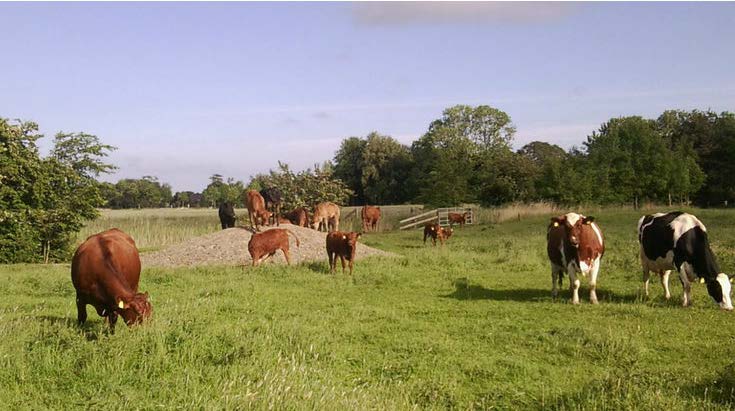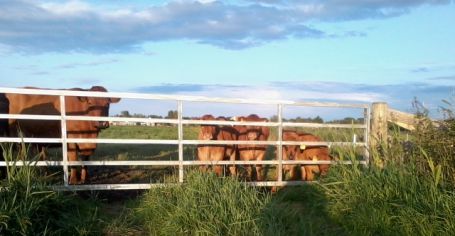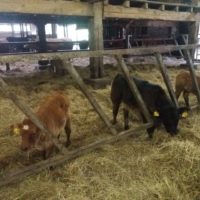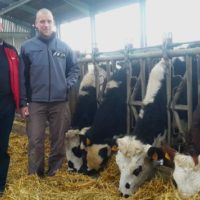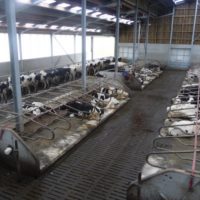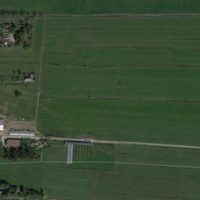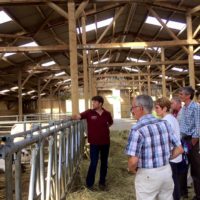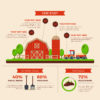Description
Background
What was the context?
The farm is located in the middle of the Wesermarsch region, in an intensive dairy cattle region with strong competition on the land. The high liabilities at the time when the farm was handed over to the son forced the son to look for alternatives in order to reduce his liabilities. There were some discussions with banks and consultants about an extension of the stable building with a new milking system to ensure the most efficient and thus liquidity in the next few years. As this project was very labour-intensive and risky, other financial possibilities were calculated, including a conversion to organic farming with suckler cows and little external input (feed, fertiliser). The farmer liked this option because of the ethical principles, labour savings and the old liabilities could also be repaid.
What was the problem to solve?
The liabilities from the past should be paid and if possible, no new ones should be taken up. Costs were to be reduced, animal welfare increased, and the risk minimised.
What were the farmers’ motivations?
Ethical, ecological and personal reasons were responsible for the motivation.
Detailed description
What did the farmer do?
In the conversion phase, the old milking system was first abolished, the cows were no longer milked and the calves remained with the cows. It was crossed in with a limousine and Angus, the old stables were converted into straw stables and scattered with their own hay. The feeding was converted to complete grassland in the form of pasture and hay and no external carriers were used.
Results
What has been improved (workload, profitability, higher production,…) and to what extent?
The workload was reduced by one work unit so that the farmer himself could pursue an external profession and the woman remained the main person responsible on the farm. The subsidies and the sale of cattle after about 9 months were used to repay liabilities and cover staff costs. The cows improved their health considerably and veterinary costs were reduced. Wear on machinery was also reduced.
Adoption criteria
In which context and at which condition the innovation can be adopted by other farmers?
The innovation is based on an alternative solution to get out of the growth spiral in order to concentrate on one’s own resources and move as self-sufficiently as possible. Farmers with similar structures should not only deal with the growth issue, but also look for healthy solutions for the use of existing resources. Furthermore, the weight gain of animals without external feed based on grassland is comparable to other systems and should therefore be considered.
Future prospects
What can still be improved?
The pasture management could be even more effective and thus a rest on the pasture could be avoided. The preparation of the hay mist for the perfect swelling of the soil (humus formation = increase in yield) An appropriate price for the animals from such systems cannot be guaranteed via conventional slaughterhouses. Direct marketing would require more personnel and is not possible at this stage with the available resources. A concept of direct marketing via social media and website with farm slaughtering exists but is not yet feasible.
How can it be disseminated?
The farmer is happy to receive farmers and introduce his system and reminds them of the use of their own resources and the dependence of today’s agricultural fodder farms on the market. Its innovation has ethical, financial and operational backgrounds. Farms with the same conditions can meet for discussions on the farm.
What are the threats?
The system is very weather-dependent and due to the future strong fluctuations of the weather it is necessary to prepare for these events and to calculate buffers of hay bales. Another challenge is the increasing competition of the land prices and the pressure on the land.


